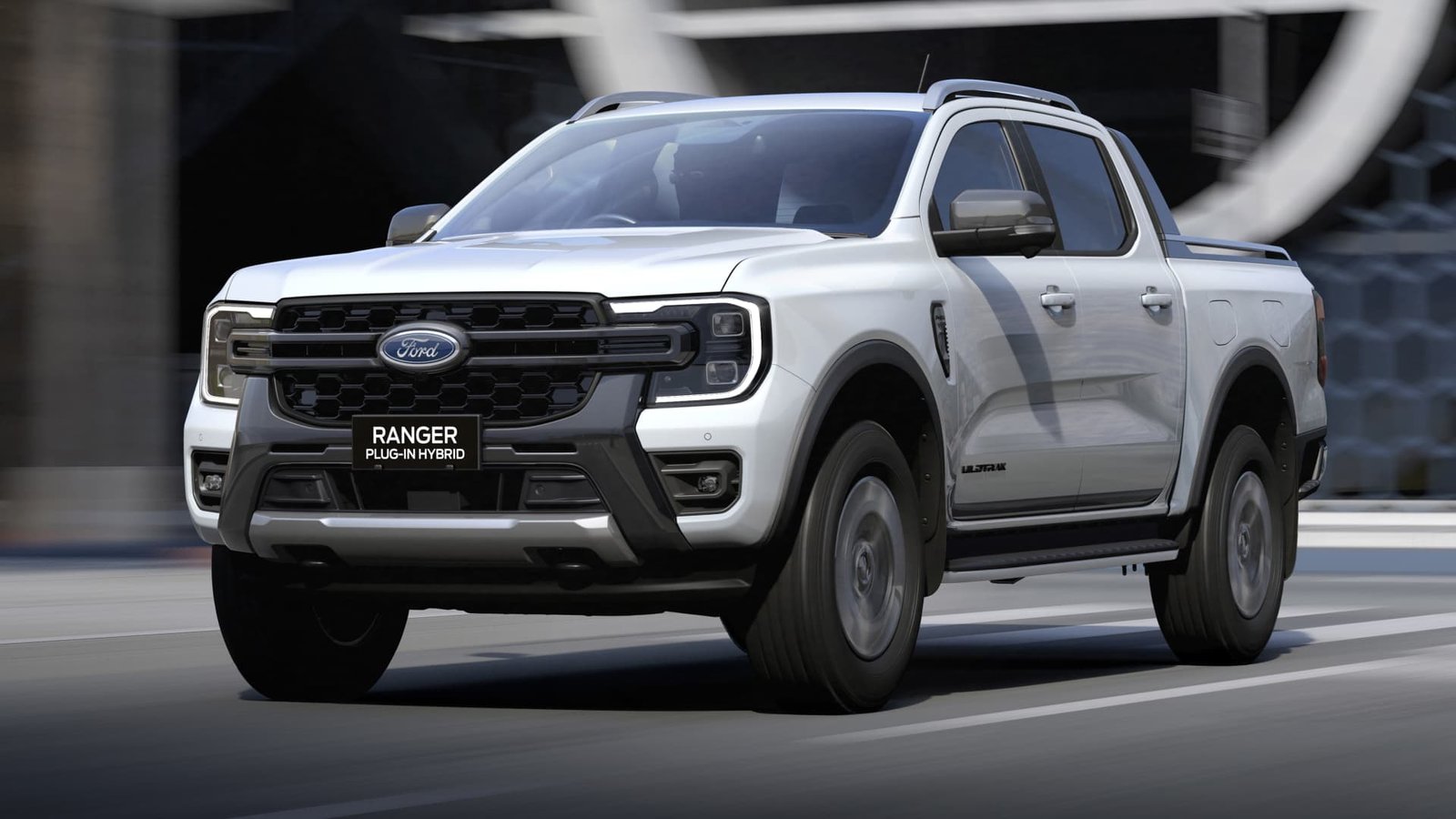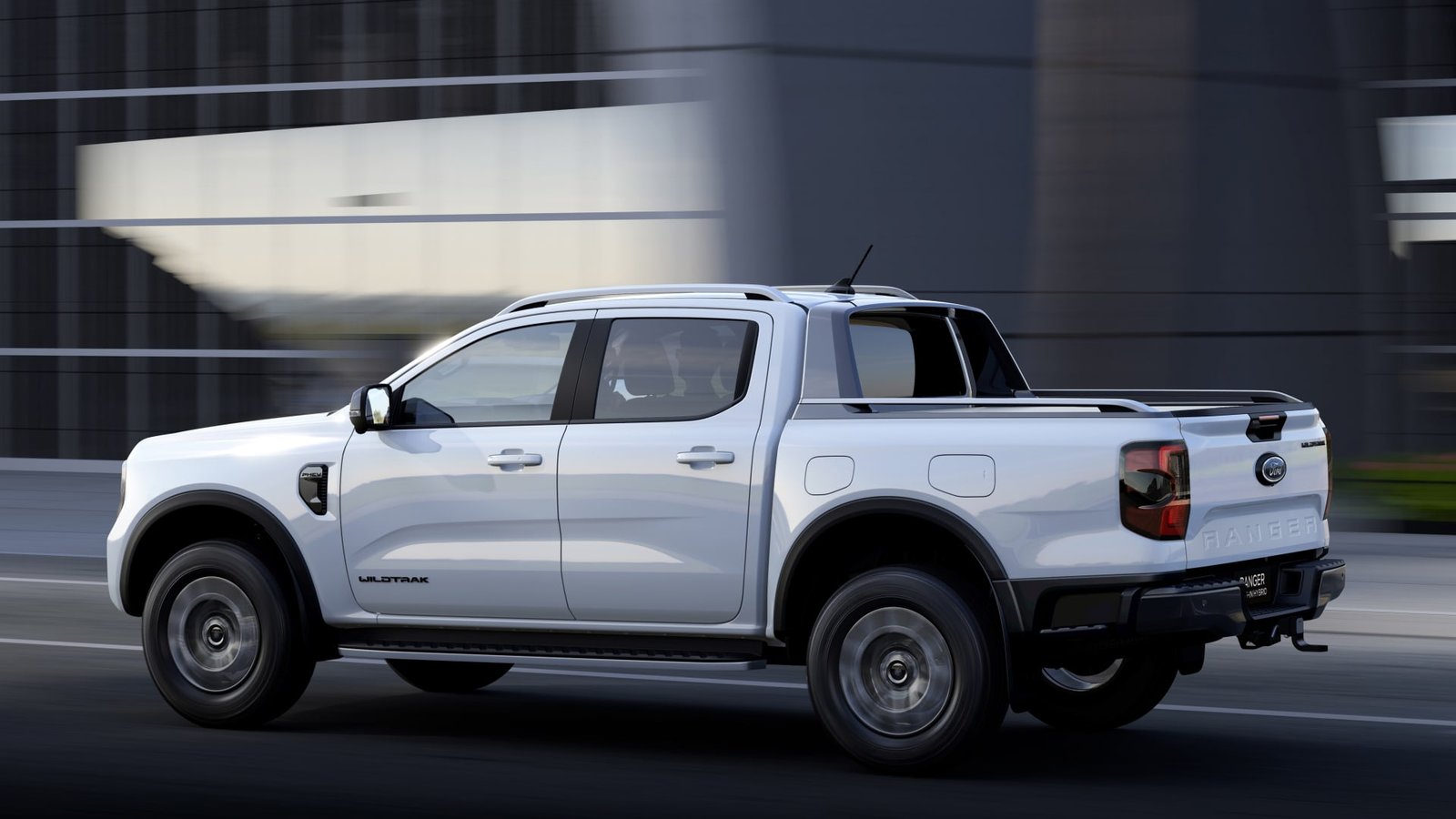[bsa_pro_ad_space id=14]
The first hybrid Ford Ranger will be built in a different factory to the rest of the line-up – and slapped with an import tariff despite its eco-friendly image.
The 2025 Ford Ranger plug-in hybrid is a step closer to becoming the new most expensive variant in the line-up with confirmation it will incur an import tariff not faced by the rest of the model range.
All other variants in the Ford Ranger line-up in Australia – four-cylinder and V6 diesel, and twin-turbo V6 petrol – are built in Thailand, with which Australia has had a Free Trade Agreement since 2005.
Now Ford has confirmed Ranger plug-in hybrid utes – which can travel up to 45km on electric power before the turbo-petrol engine switches on – due in Australia in early 2025 will be produced in South Africa.
Unlike Thailand, Australia does not have a Free Trade Agreement with South Africa – so the plug-in hybrid (PHEV) ute will be hit with a 5 per cent import tariff, even though it will be the most efficient model in the range.
The same tariff is faced by the Volkswagen Amarok – the twin of the Ford Ranger, built in the same Ford factory in South Africa – as well as other cars built in the country, including the VW Polo city hatch and some BMW X3 SUVs.
It is in addition to the cost of the Ford Ranger PHEV’s electric motor and battery – expected to make it one of, if not the most expensive model in the ute line-up, with an estimated price close to $100,000 for top-of-the-range versions.
Prices are yet to be confirmed – and it is still unclear which model grades the hybrid system will be available on – however other car makers typically charge a $10,000 to $15,000 premium for plug-in hybrid models, due to the battery pack, electric motor and associated components.
The current most expensive model in the Ford Ranger line-up is the Raptor twin-turbo V6 petrol performance ute ($89,190 plus on-road costs from 1 January 2024) – while the most expensive ‘regular’ model is the Platinum V6 diesel ($79,390 plus on-roads from January 2024).
Reports subsequently emerged out of South Africa in October 2023, citing listings by Ford engineers on corporate social-media platform LinkedIn.
Ford has announced it will invest 5.2 billion South African rand ($AU432 million) into its Silverton, South Africa factory to produce the Ranger plug-in hybrid.
It includes a new battery-pack assembly facility, changes to robots and welding equipment, and space on the production line to fit the batteries in the chassis.
The Silverton factory has the capacity to build up to 200,000 vehicles per year – and currently produces the second-generation VW Amarok for all markets, the Ford Ranger ute for Europe and Africa, and the Ford Everest SUV for certain African countries.
“As with the current Ranger models, the new Ranger Plug-in Hybrid will be exported to Europe,” Ford International Markets Group operations director Andrea Cavallaro said in a media statement.
“For the first time in about two decades the Silverton plant will also be supplying vehicles to Australia and New Zealand, as it will be the source market for the Ranger plug-in hybrid for these countries.”
The last Ford built in the Silverton plant for Australia was the second-generation Focus hatch and sedan, sold from 2005 to 2011.
As previously reported, the Ford Ranger plug-in hybrid combines a 2.3-litre turbocharged four-cylinder petrol engine with an electric motor and a battery pack large enough for 45km of electric driving range.
Power and torque outputs are yet to be revealed – nor the size of the battery – however Ford says it will produce more torque than the current 600Nm turbo-diesel V6.
[bsa_pro_ad_space id=15]








